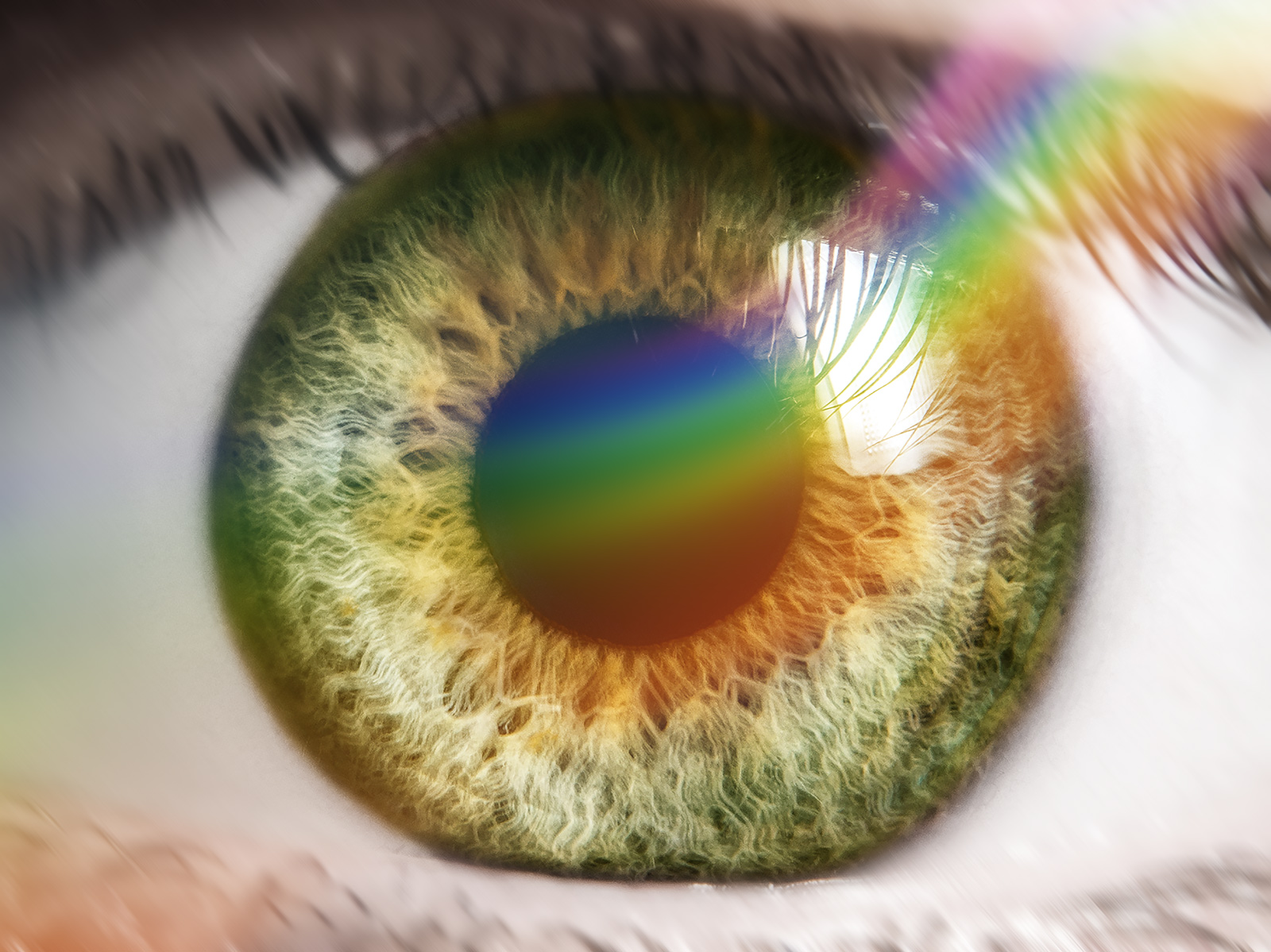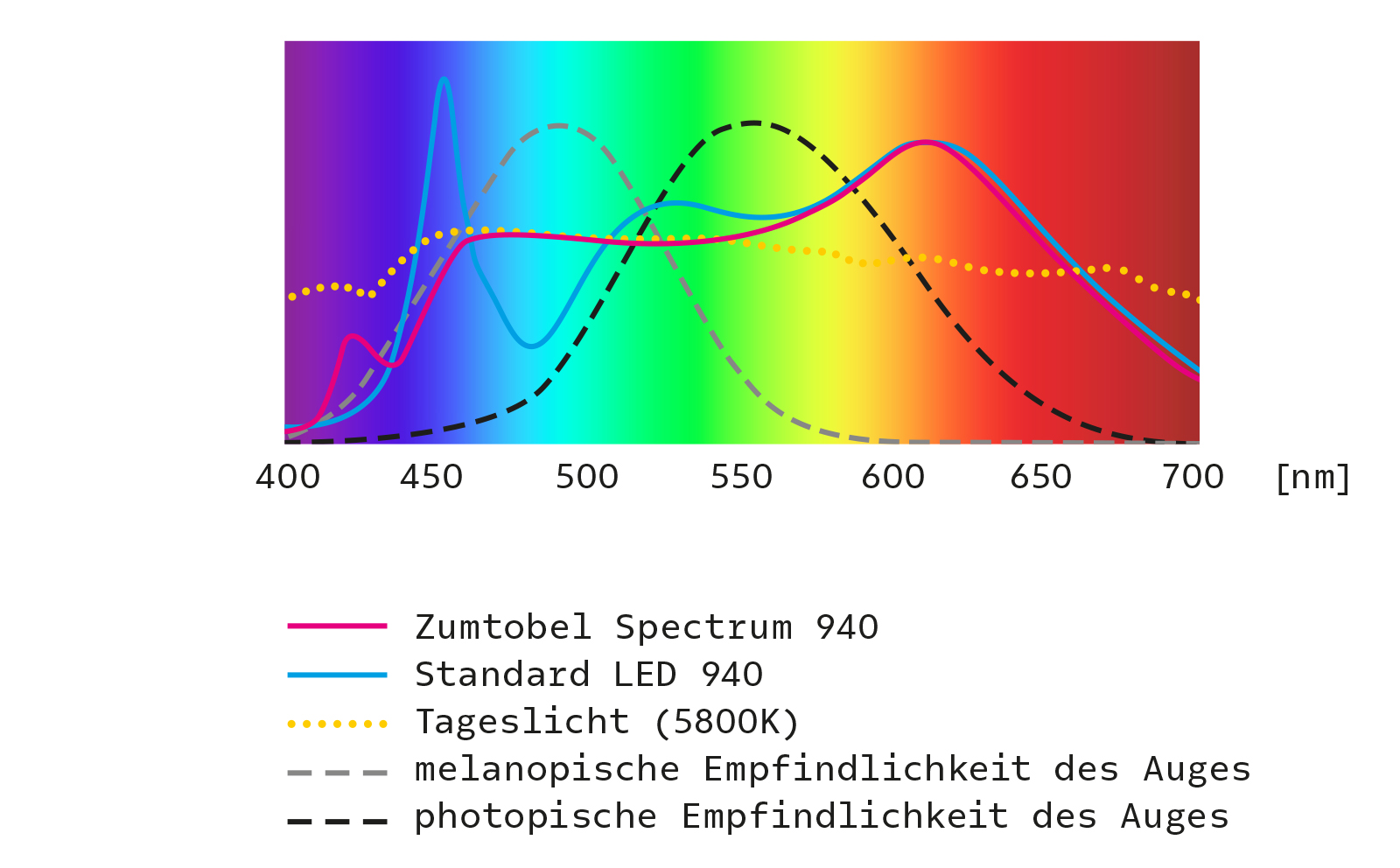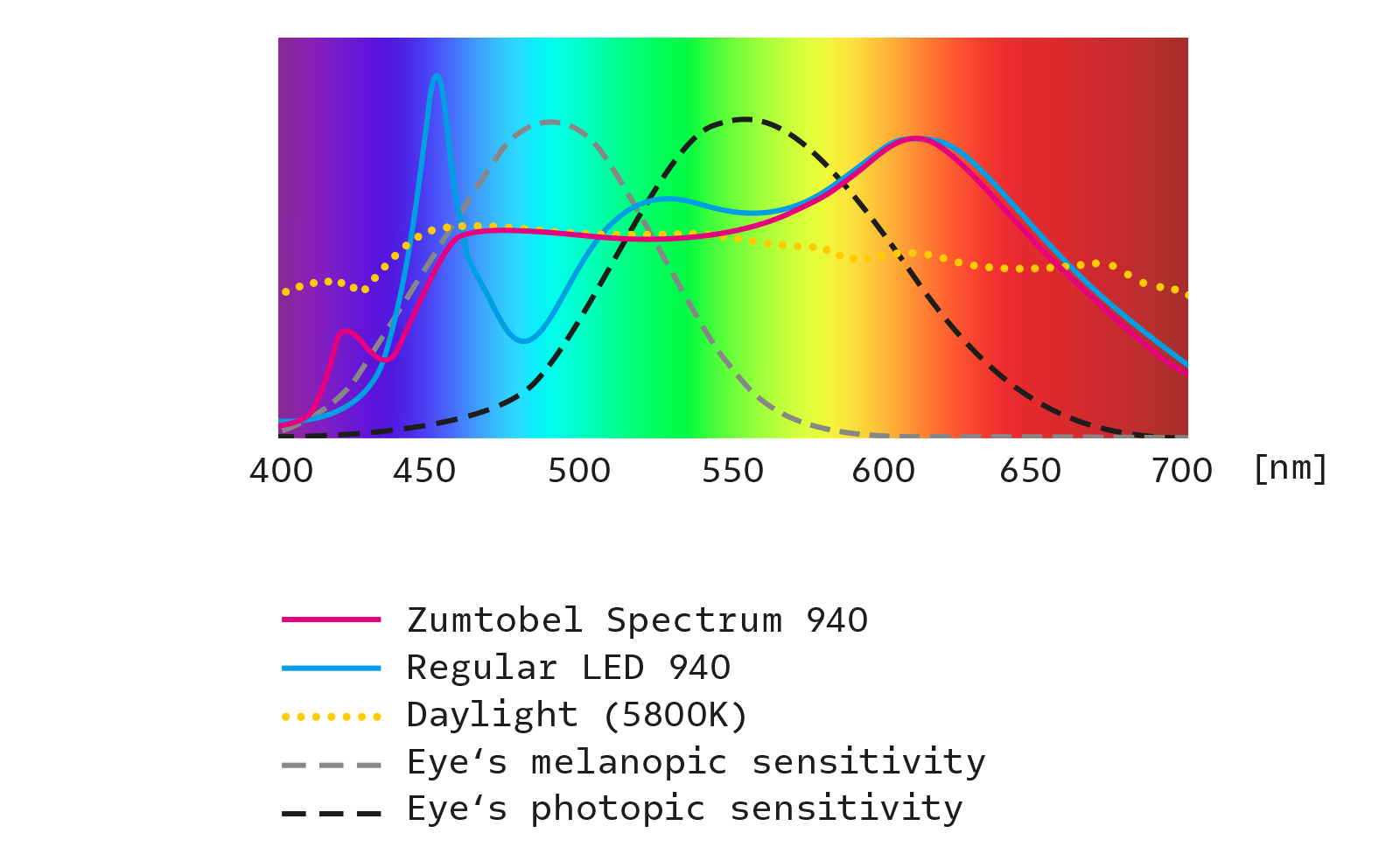Wenn das Unsichtbare zählt | When invisible matters

Das blaue Licht der LED kann das Auge stark strapazieren. Zumtobel reagiert mit einer neuen Technologie, welche den Sehkomfort durch ein verändertes LED-Farbspektrum deutlich verbessert und für allgemeines Wohlbefinden sorgt.
Licht mit seiner visuellen und nicht-visuellen Wirkung hat großen Einfluss auf unsere Gesundheit. Dabei gewinnt die biologische, also die nicht-visuelle, Wirkung zunehmend an Bedeutung. Sie beeinflusst die Schlafqualität, wichtige Körperfunktionen und das allgemeine Wohlbefinden. Moderne Beleuchtungskonzepte berücksichtigen bereits die nicht-visuellen Wirkungen von Licht. Zumtobel geht nun noch einen Schritt weiter und verändert das LED-Farbspektrum in einem bestimmten Wellenlängenbereich, in dem das Auge für visuelle, emotionale und biologische Reize besonders empfindlich ist. Dabei orientiert sich Zumtobel am Tageslichtspektrum.
Harmonisiertes Lichtspektrum
Um dem Tageslicht aus der menschlichen Blickrichtung so nahe wie möglich zu kommen, hat Zumtobel die Intensitäten der blauen Wellenlängen innerhalb des Spektrums deutlich reduziert und gleichzeitig die azurblauen Wellenlängen – die Wellenlängen mit der stärksten melanopischen Wirkung – erhöht. Im blau-azurblau-türkisen Spektralbereich, also in dem Bereich in dem die visuelle als auch nicht-visuelle Wirkung am stärksten ist, gleicht das Licht von Zumtobel Spectrum dem kälteren Licht des Himmels zu 97 Prozent.
Positiver Effekt auf Konzentration und Wohlbefinden
Vor einigen Jahren haben Forscher einen neuen Rezeptortyp auf der Netzhaut entdeckt, der beim Menschen nicht-visuelle Effekte hervorruft und somit Einfluss auf unsere Gesundheit, unseren Biorythmus und auf unser Wohlbefinden hat. Die neu entdeckten lichtsensitiven retinalen Ganglienzellen reagieren besonders stark auf sichtbares Licht im langwellig »bläulichen« Spektralbereich. Die spektrale Zusammensetzung des Lichts beeinflusst somit direkt den menschlichen Organismus. An dieser Stelle hat Zumtobel angesetzt. Wir haben erkannt, dass eine Harmonisierung des Spektrums eine positive Auswirkung auf den Menschen hat: Die Augen bleiben entspannt und ermüden nicht so schnell. Das wirkt sich einerseits positiv auf die Konzentration aus, andererseits kann sich das Auge nach anstrengenden Sehaufgaben schneller und einfacher entspannen.
Der Forschung einen Schritt voraus
Zumtobel orientiert sich bei der Harmonisierung des Spektrums am optimierten Spektrum für Innenräume und bringt so die Vorteile des wärmeren und trotzdem erfrischenden, konzentrationsfördernden Lichts der Natur in Innenräume. Dabei berücksichtigt allein Zumtobel Spectrum mit seinem veränderten Lichtspektrum nicht nur die Bedürfnisse des Menschen, sondern mit den Anpassungen im azurblauen und blau-violetten Spektralbereich auch die Eigenheiten und besondere Beschaffenheit seiner künstlichen Umgebung. Mit diesem bionischen Ansatz und der Orientierung an der Natur ist Zumtobel dem aktuellen Stand der Forschung einen Schritt voraus, denn wir vermeiden mit dem harmonisierten Spektrum bislang unerforschte negative nicht-bildgebende Effekte.

Zumtobel Spectrum: Im Wellenlängenbereich zwischen (circa) 460nm und 555nm wird das LED-Farbspektrum an das Tageslicht angepasst.
The blue light of the LED can put a lot of strain on the eye. Zumtobel has responded with a new technology that significantly improves visual comfort by changing the LED colour spectrum and enhances general well-being.
Light with its visual and non-visual effects has a major impact on our health. The biological, i.e. non-visual, effect is becoming increasingly important. It influences sleep quality, important bodily functions and general well-being. Modern lighting concepts already take account of the non-visual effects of light. Zumtobel now goes one step further and changes the LED colour spectrum within a specific wavelength range in which the eye is particularly sensitive to visual, emotional and biological stimuli. In doing so, Zumtobel is guided by the daylight spectrum.
Harmonized light spectrum
To get as close as possible to daylight as seen by the human eye, Zumtobel has significantly reduced the intensities of the blue wavelengths within the spectrum and, at the same time, increased the azure wavelengths – the wavelengths with the strongest melanopic effect. In the blue-azure-turquoise spectral range, i.e. in the range in which the visual and non-visual effect is strongest, the Zumtobel Spectrum light is 97 percent identical to the cooler light of the sky.
Positive effect on concentration and well-being
A few years ago, researchers discovered a new retinal receptor type, which produces non-visual effects in people and therefore influences our health, our biorhythm and our well-being. The newly discovered photosensitive retinal ganglion cells react particularly strongly to visible light in the long-wave »bluish« spectral range. The spectral composition of light therefore directly influences the human organism. Zumtobel has addressed this issue precisely. We realised that a harmonisation of the spectrum has a positive effect on human beings: the eyes remain relaxed and do not tire as quickly. On the one hand, this has a positive effect on concentration, on the other hand, the eye can relax more quickly and easily after strenuous visual tasks.
One step ahead of research
In harmonizing the spectrum, Zumtobel is guided by the optimized spectrum for indoor use, thus bringing the advantages of the warmer yet still refreshing, concentration-promoting daylight indoors. Only Zumtobel Spectrum, with its changed light spectrum, takes into account not only the needs of people, but, with the changes made in the azure and blue-violet spectral range, also the properties and special characteristics of their artificial environment. With this bionic approach and the focus on nature, Zumtobel is one step ahead of the current state of research, because the harmonised spectrum means we can avoid as yet unexplored negative non-image-forming effects.

Zumtobel Spectrum: In the wavelength range between (approx.) 460nm and 555nm, the LED colour spectrum is adapted to daylight.
[Zumtobel ist Sponsor der LICHT2021]